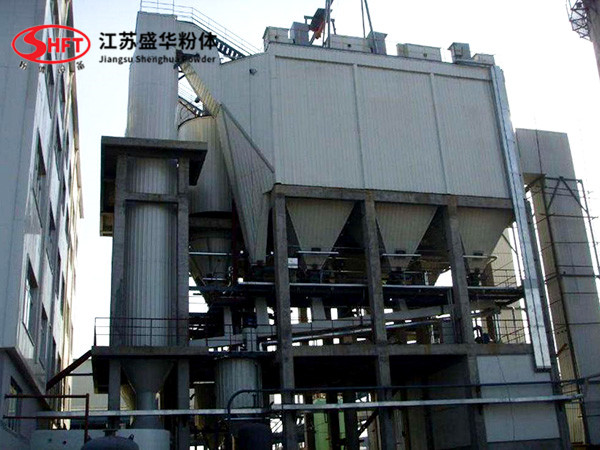-
tel: +8617802596658
-
email: shpowderseparator@gmail.com
-
Whatsapp: 8617802599580
Semi-Dry Desulfurization and Denitrification

The basic process of semi-dry desulfurization + low-temperature denitrification is as follows: coke oven exhaust gas → flue → desulfurization tower → bag filter → SCR reactor → coke oven chimney discharge.
The flue gas containing a large amount of pollutants generated by the combustion of the coke oven first enters the desulfurization tower from the coke oven flue under the action of suction, and the desulfurizer sodium carbonate is sent to the atomizer of the desulfurization tower by the quantitative feeding device and the solution pump. The atomizer sprays the sodium carbonate solution into the desulfurization tower in the form of atomized droplets to react with the sulfur dioxide in the flue gas to generate sodium sulfite powder particles, thereby achieving the desulfurization treatment of the flue gas. The chemical reaction formula is:
Na 2 CO 3+SO 2=Na 2 SO 3+CO 2
The desulfurizer injection device is interlocked with the sulfur dioxide concentration at the inlet and outlet of the system, and the system automatically adjusts the desulfurizer injection amount according to the sulfur dioxide concentration of the flue gas. The atomizer can atomize the sodium carbonate solution into fine droplets of 50μm, increasing the surface area of contact between the desulfurizer and sulfur dioxide, so that the desulfurization reaction can be more complete and the desulfurization efficiency is higher.
The flue gas after desulfurization enters the dust removal and denitrification reactor, and the dust and sodium sulfite particles in the flue gas are filtered by the dust removal filter bag, and are collected by the ash conveying system and sent to the ash bin after compressed air backwashing; the flue gas after desulfurization and dust removal enters the low-temperature SCR reactor, using ammonia as a reducing agent for nitrogen oxides, and generating nitrogen and water after redox reaction, thereby realizing the denitrification treatment of the flue gas.









